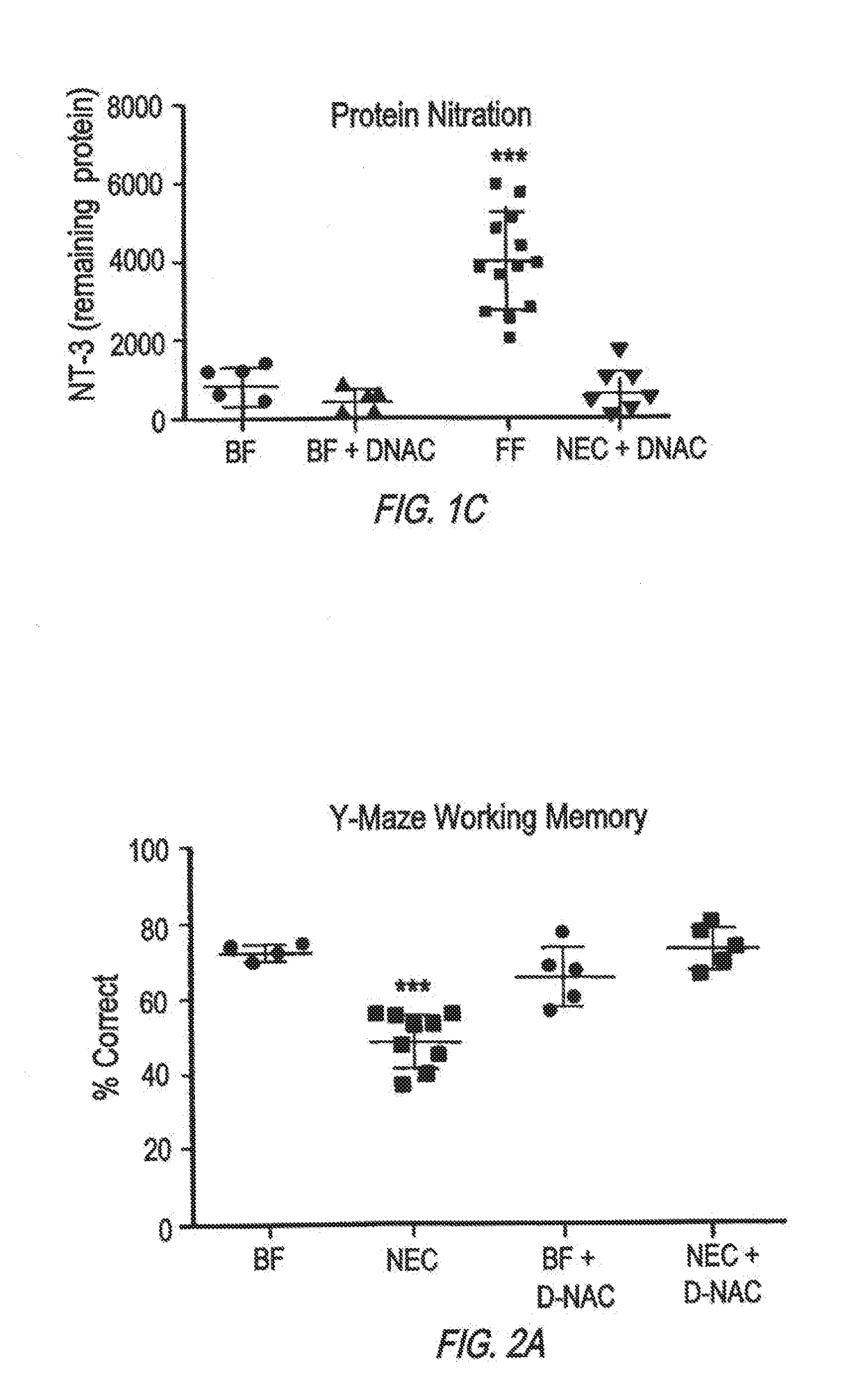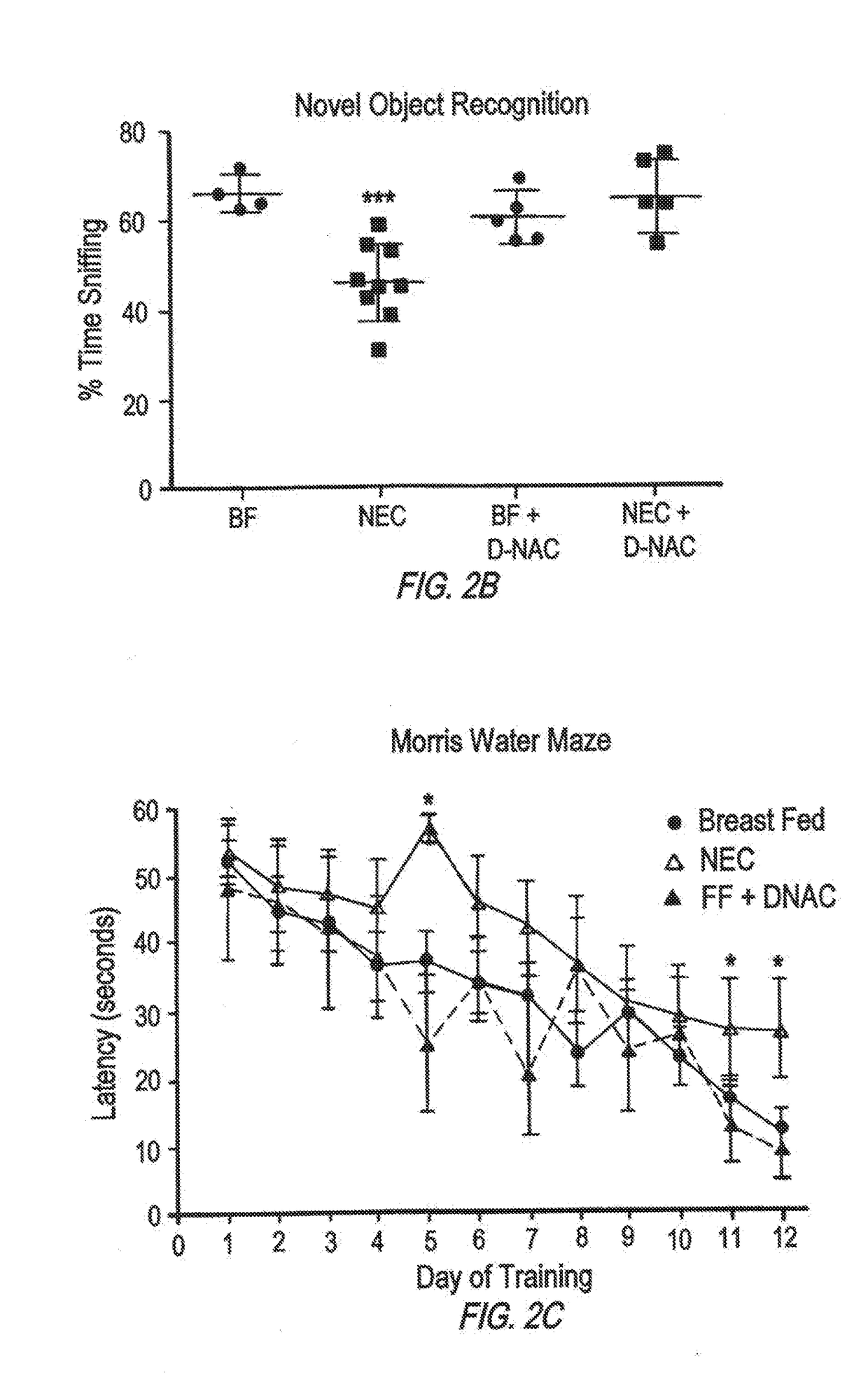Dendrimer compositions and use in treatment of necrotizing enterocolitis and other gastrointestinal disorders
a technology of dendrimer and composition, which is applied in the field of oral formulations of poly (amidoamine) dendrimer, can solve the problems of severe neurological injury, no effective treatment or prophylactic approach for nec and its associated systemic inflammation, and severe impairment of cognition, so as to improve the function, prevent or alleviate injury, and improve the effect of brain injury and gut injury
- Summary
- Abstract
- Description
- Claims
- Application Information
AI Technical Summary
Benefits of technology
Problems solved by technology
Method used
Image
Examples
example 1
[0067]The development of NEC requires the activation of the bacterial receptor toll like receptor 4 (TLR4) on the intestinal epithelium, as mice lacking TLR4 are protected from NEC, while humans with NEC exhibit increased TLR4 activation in the gut. Activation of TLR4 on the intestinal epithelium leads to activation of microglia, resulting in the loss of myelin in the prefrontal cortex, and the development of cognitive impairment in mice in a manner that closely resembles the disease observed in humans.
[0068]Poly(amidoamine) dendrimers target inflammation in the CNS and deliver drugs to produce functional improvements. As demonstrated by the following example, oral administration of the dendrimer leads to significant accumulation of the dendrimer in the injured areas of the gut and the brain in mice with NEC, with further selective localization in the inflammatory cells. Strikingly, oral administration of an anti-inflammatory agent (N-acetyl cysteine) usi...
example 2
n Piglet Model
[0106]Similar results have been obtained using a piglet model, described by Good, et al. Am J Physiol Gastrointest Liver Physiol. 2014 306(11):G1021-32. doi: 10.1152 / ajpgi.00452.2013. Epub 2014 Apr. 17.
example 3
tion of Mouse Results in Human Brain from Infants Who Died from NEC
[0107]The findings in mice were corroborated in studies of human brain obtained from infants who died from NEC, and were not seen in age matched control brains. Mouse and human brains with NEC revealed increased apoptosis and impaired differentiation of myelin producing oligodendrocyte progenitor cells (OPCs) and activation of the immune modulating microglial cells in the corpus callosum, hippocampus and midbrain, leading to the release of reactive oxygen species (ROS) and evidence of oxidative injury
PUM
| Property | Measurement | Unit |
|---|---|---|
| molecular weight | aaaaa | aaaaa |
| particle size | aaaaa | aaaaa |
| length | aaaaa | aaaaa |
Abstract
Description
Claims
Application Information
 Login to View More
Login to View More - R&D
- Intellectual Property
- Life Sciences
- Materials
- Tech Scout
- Unparalleled Data Quality
- Higher Quality Content
- 60% Fewer Hallucinations
Browse by: Latest US Patents, China's latest patents, Technical Efficacy Thesaurus, Application Domain, Technology Topic, Popular Technical Reports.
© 2025 PatSnap. All rights reserved.Legal|Privacy policy|Modern Slavery Act Transparency Statement|Sitemap|About US| Contact US: help@patsnap.com



